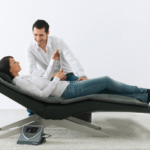Parkinsons Recovery is dedicated to identifying promising new therapies that offer the promise of reversing symptoms of Parkinson’s disease. One such therapy, High-Dose Thiamine, was discussed on Parkinsons Recovery Radio by Italian neurologist Antonio Constantini MD. He has been prescribing High Dose Thiamine as a treatment for his Parkinson’s patients with good success. Click on the pointer to hear the replay.
Parkinsons disease (PD) is a systemic disease with motor and non-motor deficits. In July 2011, Dr. Costantini treated a 47-year-old man affected by spinocerebellar ataxia type 2 (SCA2). In this patient, fatigue as well as motor symptoms improved after parenteral high doses of thiamine (also this was our proprietary research).
He formulated the hypothesis that in some inherited and degenerative diseases of the nervous system, the pathogenesis of the symptoms could be linked to a focal thiamine deficiency due to a dysfunction of the circulation of thiamine in the intracellular space or to structural enzymatic abnormalities. He speculated this dysfunction could be responsive to high-dose thiamine. Parkinson’s disease has also been related to mutations associated with SCA2. Applying the same approach to patients with Parkinson’s symptoms the observed results were nothing short of startling and never previously described in literature.
Links: https://www.youtube.com/channel/UCwsHIcP_h6QVWwd4uRg-HDQ?view_as=subscriber
Robert Rodgers PhD
Founder 2004
Parkinsons Recovery

